What types of rescue parachutes are available for paragliding ?

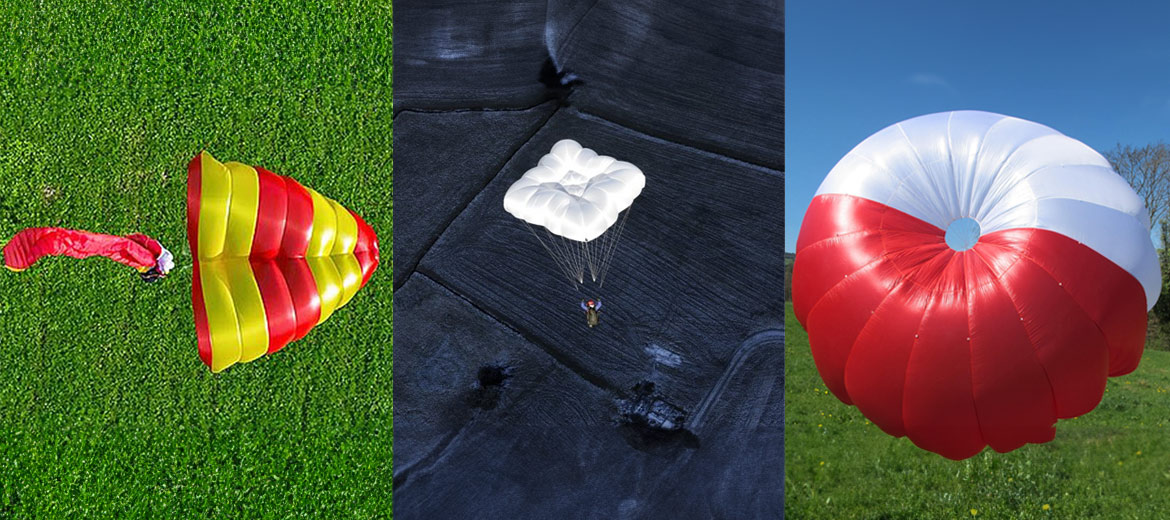
Paragliding, this exciting and captivating aerial activity, requires particular attention to pilot safety. Among the essential equipment for all paragliders, the rescue parachute occupies a prominent place. In the event of a critical situation, it can be the last resort for the pilot's survival and ensure the safest possible return to the ground. In this article, we'll explore the different types of rescue parachute suitable for paragliding, focusing on their characteristics, their use depending on the situation and the pilot's weight, and the special features of the tandem rescue parachute.
THE DIFFERENT TYPES OF RESCUE PARACHUTE FOR PARAGLIDING
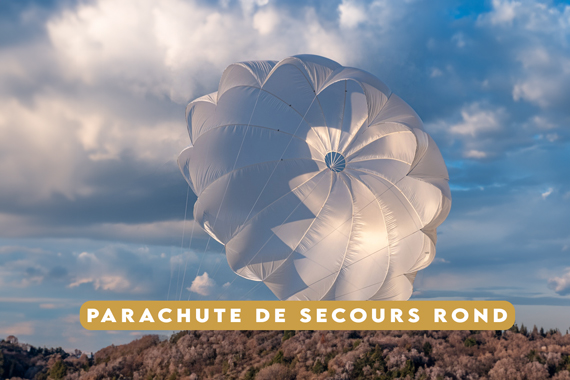
Round rescue parachute :
The round rescue parachute is the oldest and most traditional parachute used in paragliding. Its simple design makes it a popular choice with pilots, as it is relatively easy to maintain and repack. When deployed, the round rescue parachute offers a smooth, gradual opening, which is particularly reassuring for pilots in general.
However, it's important to note that round rescue parachutes can be less efficient than more recent models. Their descent speed, for equivalent surface area compared with a square rescue parachute for example, may be higher. Despite these limitations, the round rescue parachute remains a viable option for many paragliders, especially those looking for a simple, economical solution. Indeed, these parachutes have the advantage of being the least expensive on the market.
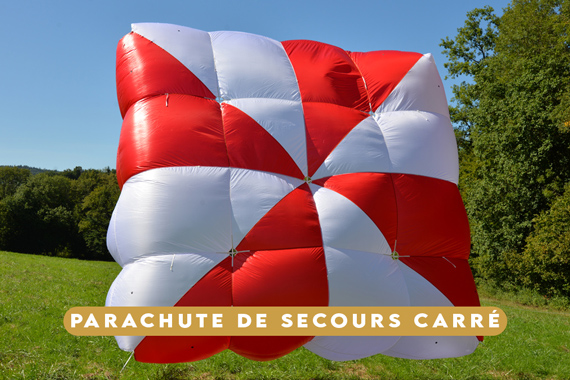
Square rescue parachutes :
Square rescue parachutes have been developed to improve in-flight performance and stability over traditional round parachutes. Their square shape makes them more resistant to the aerological turbulence the pilot is likely to encounter during descent.
Square rescue parachutes offer faster opening and lower descent speeds than round models. This can be an advantage in emergency situations where every second counts.
Square parachutes require great respect for the manufacturer's packing method. This implies that the pilot must be more experienced and assiduous when packing. That's why we recommend that you only have your rescue regularly repacked by a specialist store or an experienced professional.

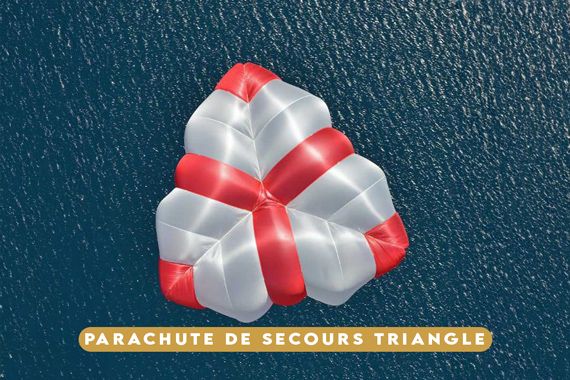
Triangle rescue parachute :
The triangular-shaped rescue parachute combines some of the features of round and square parachutes. It offers better in-flight stability than round parachutes, while retaining a smooth, gradual opening. The triangular design also allows a more controlled descent speed than round parachutes.
However, triangular rescue parachutes can be more expensive than round models, and their packing complexity requires adequate training to handle them safely. Experienced pilots seeking a balance between performance and ease of use may find that triangular rescue parachutes meet their needs. They also have the advantage of being fairly light, making them a popular rescue for walk-around pilots.
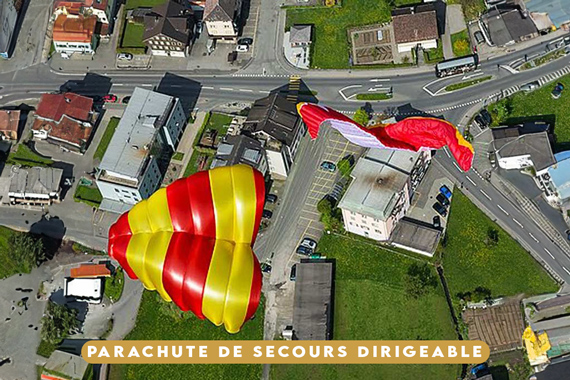
Steerable rescue parachute :
The steerable rescue parachute is an advanced model designed to provide pilots with a degree of control and piloting ability after opening. This feature is particularly useful when the pilot finds himself in an emergency situation and needs to divert his parachute course to a safer landing zone.
Thanks to controls similar to paraglider brakes, the pilot can modify the trajectory of the steerable rescue parachute, enabling him to bypass potential obstacles and reach a more clement area, provided it is within reasonable distance. Generally speaking, these rescue parachutes are more likely to drift, as their glide ratio is very low.
The use of this type of parachute requires advanced training. Don't hesitate to ask professional pilots for reliable advice.

PARAGLIDING RESCUE PARACHUTE BY WEIGHT
Another criterion to consider when choosing a rescue parachute is its weight and volume. This is important not only to ensure that the parachute is suitable for your flying style, but also that it will fit into the front container it is designed to fit into.
"Standard" Rescue Parachute :
"Light" Rescue Parachute :
"Ultra Light" Rescue Parachute :
"Standard" Rescue Parachute
A standard reserve parachute will generally weigh between 1.6 and 2.2 kilos, depending on your gross weight. These are generally very inexpensive rescues, ideal for a first set-up as they limit the initial outlay on equipment. On the other hand, they can be very bulky. So make sure the rescue fits into the harness or reserve pocket.
"Light" Rescue Parachute
For pilots looking for a good Weight/Price/Volume compromise, then Light rescue parachutes are the best possible choice. With an average weight of between 1.15 kilos and 1.6 kilos, depending on weight, these rescues are virtually compatible with all conventional harness rescue pockets and medium-sized containers.
"Ultra Light" Rescue Parachute
For weight and volume purists, Ultra Light rescue parachutes will come in at under a kilo, and have an extremely small footprint. Fall rates are close to the 5.5m/s limit. These paragliding rescue parachutes are more expensive than standard or light ones. They are generally aimed at a more discerning public.
A standard reserve parachute will generally weigh between 1.6 and 2.2 kilos, depending on your gross weight. These are generally very inexpensive rescues, ideal for a first set-up as they limit the initial outlay on equipment. On the other hand, they can be very bulky. So make sure the rescue fits into the harness or reserve pocket.
For pilots looking for a good Weight/Price/Volume compromise, then Light rescue parachutes are the best possible choice. With an average weight of between 1.15 kilos and 1.6 kilos, depending on weight, these rescues are virtually compatible with all conventional harness rescue pockets and medium-sized containers.
For weight and volume purists, Ultra Light rescue parachutes will come in at under a kilo, and have an extremely small footprint. Fall rates are close to the 5.5m/s limit. These paragliding rescue parachutes are more expensive than standard or light ones. They are generally aimed at a more discerning public.
TANDEM RESCUE PARACHUTE
Tandem paragliding flights are becoming increasingly popular with passengers who want to experience the unique sensations of free flight. In this context, two-seater pilots must be equipped with rescue parachutes adapted to the combined weight of pilot and passenger, in addition to that of the equipment. These rescue parachutes are specially designed to withstand heavier loads, while ensuring fast, reliable opening.
During a tandem flight, safety is of paramount importance, as the pilot's responsibility also extends to that of the passenger. Tandem rescue parachutes are rigorously tested and certified to withstand extra loads.
Front container :
Some paraglider pilots opt for the front container, usually because their harness doesn't have an integrated reserve pocket. These pockets attach to the front of the harness on the main carabiners. It should be noted that there are no rescue parachutes specially designed for subcutaneous or ventral pockets. All rescues can fit into either type of pocket, as long as the size of the pocket is large enough to accommodate the parachute.
In conclusion, the choice of rescue parachute for paragliding is a crucial decision for the safety of the pilot and any passengers. It's essential to find out about the different types of rescue parachute available, their characteristics and their suitability for your weight. Appropriate training is also essential to know how to use the reserve parachute correctly in an emergency. Don't hesitate to seek advice from experienced professionals to make the best choice and enjoy your paragliding flights with peace of mind. The skies await you, in complete safety!
DISCOVER OUR COMPLETE GUIDE TO PARAGLIDING RESCUE PARACHUTES :
Paragliding rescue parachutes : choosing the right equipment for your flight
Is a rescue parachute compulsory for paragliding ?
How to choose a paragliding rescue parachute ?
How does a rescue parachute work ?
What's the best rescue parachute ?
How much does a rescue parachute cost ?
How to choose a paragliding rescue front container ?
The difference between a rescue parachute and a front rescue container







